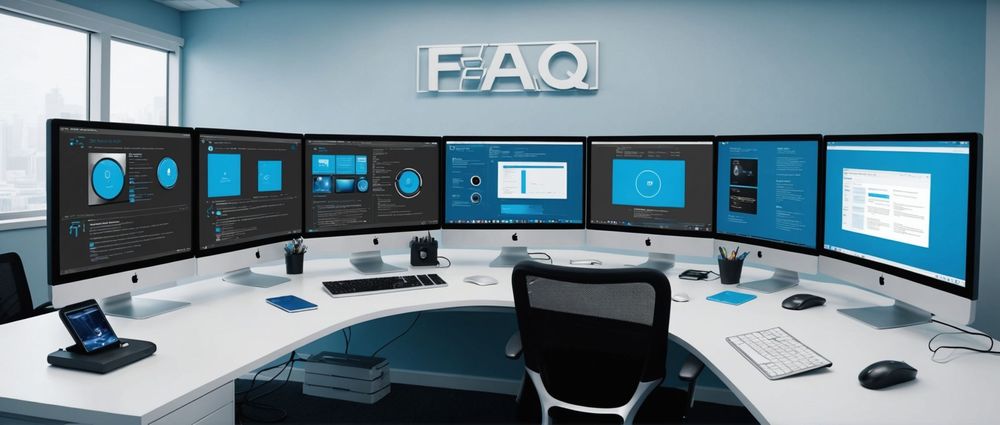An effective FAQ page serves as a crucial component of any website, addressing potential customer inquiries and enhancing user experience. In this article, we’ll explore some crystal-clear FAQ page examples and provide you with practical tips on creating your own optimized FAQ page. By focusing on clarity, organization, and relevance, you can turn a simple FAQ section into a valuable resource for your users, improving both engagement and conversions. So let’s dive into how a well-crafted FAQ page can bring benefits to your site.

The Importance of an Effective FAQ Page
An FAQ page is not just a collection of questions and answers; it plays a vital role in the customer journey. By providing detailed responses to common queries, you can reduce the volume of repetitive customer support inquiries. This not only saves time for your team but also enhances user experience, as visitors get quick answers. Moreover, a well-structured FAQ section improves site navigation and can even boost your SEO, as search engines appreciate user-friendly, informative content. Additionally, it helps build trust with your audience by demonstrating your willingness to address their concerns upfront. Overall, an effective FAQ page is essential for establishing credibility and facilitating communication.

Characteristics of a Successful FAQ Page
When developing an FAQ page, certain characteristics can elevate its utility significantly. Here are some key features to consider:
- Clear Layout: A tidy layout with headings and subheadings allows users to navigate questions easily.
- Organized Content: Group similar questions together, making it easier for users to find what they need.
- Search Functionality: Integrating a search bar enables users to pinpoint specific answers quickly.
- Engaging Language: Use a friendly tone to make the interaction feel personalized and welcoming.
- Regular Updates: Keep your FAQ section current by reviewing and updating content as needed.
These characteristics not only enhance user experience but also contribute to your website’s overall effectiveness.
Examples of Crystal-Clear FAQ Pages
Let’s look at some excellent examples of well-designed FAQ pages that successfully encapsulate the above characteristics:
1. Airbnb: Airbnb’s FAQ sections are well-organized and user-friendly. They apply a clear layout where users can navigate through categories like “Travel” and “Hosting,” making it easier to find pertinent information.
2. Shopify: Shopify utilizes a search bar at the top of their FAQ page, allowing users to input keywords and receive tailored responses. Their format is clean with questions hyperlinked to detailed answers.
3. Zoom: Zoom features a comprehensive FAQ page that is categorized and easy to scroll through. Additionally, they employ a visual design that enhances readability.
4. Google: Google’s support site serves as a model of clarity with categorized questions and straightforward answers. They also incorporate visuals, making complex inquiries easier to understand.
5. Apple: Apple’s support FAQ is organized into various product categories, providing concise answers that are easy to digest, embodying an ideal balance of brevity and detail.
How to Create Your Own FAQ Page
Creating your own FAQ page can be a straightforward process if you follow these steps:
- Identify Common Questions: Start by gathering questions your customers frequently ask. This can be done through customer service logs, feedback forms, or surveys.
- Organize Questions into Categories: Group similar questions together to help users navigate the content effortlessly.
- Provide Clear and Concise Answers: Ensure each answer directly addresses the question while being informative but concise. Avoid jargon to maintain accessibility.
- Design a User-Friendly Layout: Use headings, bullet points, and appropriate whitespace to enhance readability and aesthetics.
- Incorporate a Search Function: Adding a search bar can significantly improve user experience, enabling visitors to find specific answers rapidly.
- Review and Update Regularly: As your offerings evolve, so should your FAQ content. Regularly reviewing and updating your FAQ page keeps the information accurate and relevant.
By implementing these steps, you can create an FAQ page that is both functional and user-centric.
Conclusion
In conclusion, a well-structured FAQ page significantly enhances user experience, reduces support queries, and boosts your site’s SEO. By taking cues from crystal-clear examples and focusing on organization, clarity, and design, anyone can create a compelling FAQ section that addresses user needs effectively. Remember, the key to a successful FAQ page lies in continual updates and attention to user feedback, ensuring that your content remains relevant and helpful over time.
FAQs
1. What is the primary purpose of an FAQ page?
The primary purpose of an FAQ page is to address common questions or concerns that visitors may have, providing them with instant answers and improving their overall experience with your website.
2. How often should I update my FAQ page?
You should review and update your FAQ page regularly, ideally every quarter or as your products and services change, to ensure the information remains accurate and helpful.
3. How can I identify what questions to include?
Analyze customer feedback, support tickets, and chat logs to identify recurring questions. Surveys can also provide insight into the concerns of your audience.
4. Should I include links to external resources in my FAQ?
Yes, if external resources provide additional value or detailed information, including links can enhance your FAQ page and guide users towards comprehensive answers.
5. What is the ideal length for an answer in an FAQ?
The ideal answer length should balance detail and conciseness; generally, one to three paragraphs are effective, with essential information highlighted for clarity.


